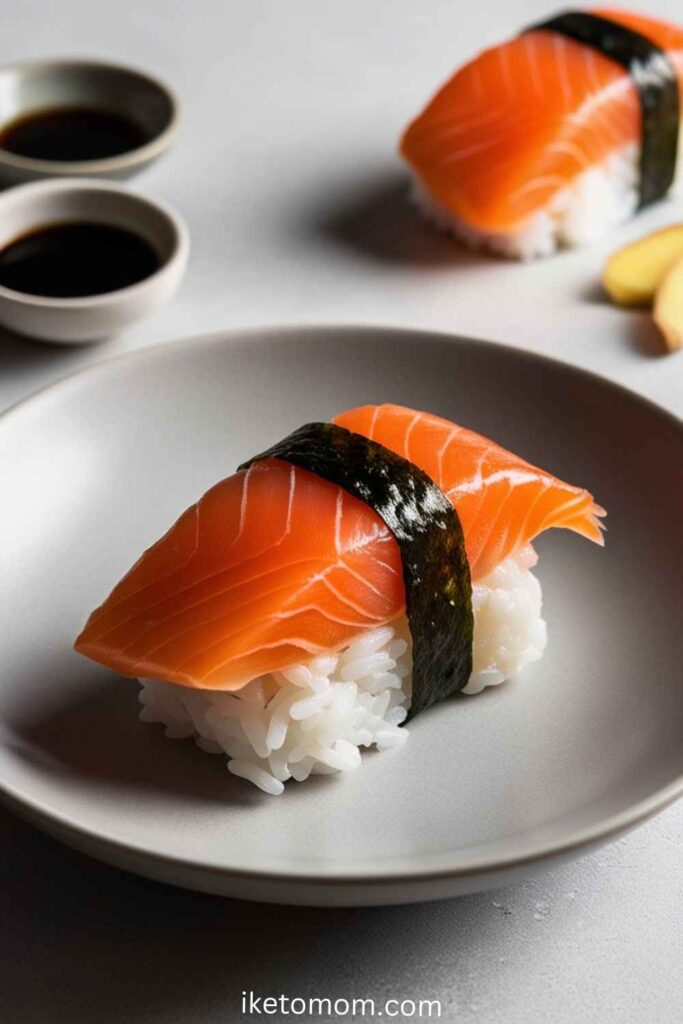This article will explore 20 Asian Foods With High Protein Ideas, offering a variety of delicious and nutritious dishes that not only satisfy your taste buds but also provide the necessary protein to support your health goals. From the savory spices of Indian curries to the delicate flavors of Japanese sushi, Asian cuisine offers a diverse array of foods that are packed with protein. Each dish in this list has been selected for its high-protein content, as well as its unique cultural and culinary appeal. Whether you’re a meat eater, vegetarian, or vegan, you’ll find options from different Asian cuisines that meet your protein needs while offering a rich, flavorful dining experience.
Protein is one of the most essential nutrients in our diet, playing a vital role in building and repairing tissues, supporting immune function, and maintaining overall bodily health. It is particularly important for muscle growth, energy production, and sustaining bodily functions throughout the day. Whether you’re an athlete, a busy professional, or someone focused on maintaining a balanced diet, ensuring an adequate intake of protein is key to a healthy lifestyle.
Asian Foods With High Protein Ideas
1. Tofu Stir-Fry
Description:
Tofu stir-fry is a versatile and popular dish in many Asian cuisines, particularly in Chinese, Thai, and Japanese cooking. As a plant-based protein, tofu is an excellent choice for vegans and vegetarians seeking a nutritious meal. It is typically stir-fried with an assortment of colorful vegetables like bell peppers, broccoli, carrots, and mushrooms, and seasoned with soy sauce, garlic, ginger, and other flavorful spices. Tofu absorbs the seasonings well, making it a savory addition to any stir-fry dish.
This dish is not only delicious but also offers a great balance of protein and fiber when paired with a variety of vegetables. It’s quick and easy to prepare, making it an ideal meal for busy weeknights or meal prep.
Nutrition Information:
- Tofu (1 cup) – 20g of protein
- Calories: Low in calories, making it a great option for those looking to maintain or lose weight.
- Additional Nutrients: Rich in iron and calcium, which are essential for healthy bones and blood circulation. Tofu is also a good source of magnesium and contains all nine essential amino acids, making it a complete protein.
2. Chicken Satay
Description:
Chicken satay is a beloved dish in Southeast Asian cuisine, particularly in Indonesia, Malaysia, and Thailand. It consists of marinated chicken pieces skewered and grilled to perfection, offering a delicious smoky flavor. The key to its mouthwatering taste is the marinade, often made with a blend of spices, turmeric, lemongrass, and a touch of soy sauce. The dish is typically served with a rich and savory peanut sauce, which adds depth and complexity to each bite.
Chicken satay is perfect as an appetizer, snack, or main course, and its combination of grilled chicken and creamy peanut sauce makes it both satisfying and flavorful. It is often served with a side of rice or vegetables, making it a well-rounded meal.
Nutrition Information:
- 1 serving of chicken satay – 30g of protein
- Additional Nutrients: Chicken satay is a great source of healthy fats, particularly from the peanuts in the sauce, which are rich in unsaturated fats, antioxidants, and vitamin E. It’s also a good source of iron and B vitamins from the chicken. This dish provides a perfect balance of protein, fats, and flavor.
3. Beef Bulgogi
Description:
Beef bulgogi is a flavorful and iconic Korean dish made with thinly sliced beef that is marinated in a sweet-savory sauce made from soy sauce, sesame oil, garlic, sugar, and other spices. The marinated beef is then grilled or pan-fried until it becomes tender and slightly caramelized, creating a perfect balance of flavors. Often served with steamed rice, vegetables, and sometimes lettuce for wrapping, beef bulgogi is not only a popular dish in Korean cuisine but also enjoyed worldwide for its savory and slightly sweet taste.
The marinade infuses the beef with deep flavors, making each bite deliciously tender and juicy. Beef bulgogi can be customized with different vegetables, such as onions, mushrooms, and bell peppers, adding more depth and nutrition to the dish.
Nutrition Information:
- 3 oz of beef bulgogi – 25g of protein
- Additional Nutrients: Beef bulgogi is a great source of iron and vitamin B12, which are essential for red blood cell production and maintaining energy levels. This dish is also rich in protein, supporting muscle growth and repair. The sesame oil in the marinade provides healthy fats, making this dish a well-rounded, nutrient-dense meal.
4. Edamame
Description:
Edamame refers to young, green soybeans that are harvested before they fully ripen. Often served as a snack or appetizer in Japanese, Chinese, and other Asian cuisines, edamame is typically steamed and lightly salted for a simple yet satisfying dish. The beans are enjoyed by popping them out of their pods, making it a fun and interactive eating experience. Edamame is a plant-based protein powerhouse and can be served on its own or tossed into salads, grain bowls, or stir-fries.
Nutrition Information:
- 1 cup of edamame – 17g of protein
- Additional Nutrients: Edamame is rich in fiber, which aids digestion and supports a healthy gut. It also contains antioxidants that help combat free radicals, promoting overall health. Along with being a great protein source, edamame is also a good source of essential vitamins and minerals, including folate, iron, and magnesium. This makes it a well-rounded, nutritious option for anyone looking to add more plant-based proteins to their diet.
5. Salmon Sushi
Description:
Salmon sushi is a popular dish in Japanese cuisine, consisting of a thin slice of fresh, raw salmon placed atop a small ball of vinegared sushi rice, with a sheet of nori (seaweed) often used to hold the rice in place. The delicate texture of the salmon pairs perfectly with the slightly tangy rice, creating a harmonious balance of flavors. This dish is often enjoyed with a dash of soy sauce, wasabi, or pickled ginger to enhance its flavor profile. Salmon sushi is not only flavorful but also offers numerous health benefits due to its high-quality ingredients.
Nutrition Information:
- 1 piece of salmon sushi – 6g of protein
- Additional Nutrients: Salmon is high in omega-3 fatty acids, which are essential for heart and brain health. It is also an excellent source of vitamin D, which supports bone health and boosts the immune system. In addition to protein, salmon provides healthy fats, making it a nutrient-dense option for those seeking both taste and health benefits in a single bite.
6. Chicken Katsu
Description:
Chicken katsu is a beloved Japanese dish made with breaded and deep-fried chicken cutlets. The chicken is typically coated in panko breadcrumbs, which gives it a light, crispy texture once fried. It is often served with a generous drizzle of tonkatsu sauce, a tangy, slightly sweet sauce made from ingredients like soy sauce, Worcestershire sauce, and ketchup. This dish is usually accompanied by shredded cabbage, steamed rice, and sometimes a side of pickles, creating a satisfying and well-balanced meal.
Chicken katsu offers a delicious combination of flavors and textures, from the crispiness of the breading to the tenderness of the chicken inside. It’s a comforting, hearty dish that pairs well with a variety of sides.
Nutrition Information:
- 1 serving of chicken katsu – 25g of protein
- Additional Nutrients: Chicken katsu contains carbohydrates from the panko breadcrumbs and fats from the frying process. While it is a delicious and filling meal, it also provides a good source of protein from the chicken, which supports muscle growth and repair. This dish offers a balance of macronutrients, making it a satisfying choice for those looking to enjoy a savory, protein-packed meal.
7. Miso Soup with Tofu
Description:
Miso soup with tofu is a traditional Japanese dish known for its warm, comforting qualities. Made from a flavorful broth of miso paste (fermented soybean paste), this soup is often enhanced with tofu cubes and seaweed, such as wakame, providing a rich umami taste. The tofu adds a soft, creamy texture, while the miso broth offers a savory depth of flavor. This dish is typically enjoyed as a side or starter in many Japanese meals and is especially popular for its soothing and restorative qualities.
Nutrition Information:
- 1 bowl of miso soup – 10g of protein
- Additional Nutrients: Miso soup is rich in probiotics due to the fermentation of the miso paste, promoting gut health and digestion. It’s low in calories, making it a light and nourishing option. In addition to protein from tofu, the soup provides minerals like iodine from seaweed and various vitamins, contributing to a well-rounded, nutrient-dense dish.
8. Shrimp Tempura
Description:
Shrimp tempura is a beloved dish in Japanese cuisine, consisting of shrimp that are lightly battered and deep-fried to a crisp, golden perfection. The delicate batter creates a crunchy exterior, while the shrimp inside remains tender and juicy. Often served with a dipping sauce, tempura shrimp offers a satisfying balance of textures and flavors. It’s commonly served as an appetizer or side dish in Japanese meals, alongside vegetables such as sweet potatoes, zucchini, or bell peppers that are also tempura-fried.
Nutrition Information:
- 3 pieces of shrimp tempura – 15g of protein
- Additional Nutrients: Shrimp tempura is a good source of healthy fats, particularly from the omega-3 fatty acids found in shrimp, which are beneficial for heart and brain health. While it’s fried, the dish remains a flavorful option for those looking for a balanced protein source in combination with the benefits of omega-3s.

I’m Priscilla Swahn, a registered dietitian with a master’s degree in nutritional sciences. With over a decade of experience in holistic nutrition, I specialize in creating delicious keto recipes to help you enjoy a healthy lifestyle. On iKetoMom, you’ll find a variety of recipes for every meal—hearty breakfasts, satisfying lunches, mouthwatering dinners, indulgent desserts, and refreshing drinks. My recipes make keto living easy and enjoyable for the whole family. Featured in EatingWell and MindBodyGreen, I also collaborate with health centers and corporate companies to share my expertise. Join me and discover the joy of keto cooking!












